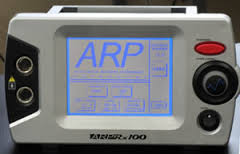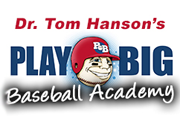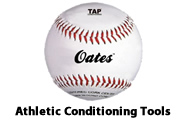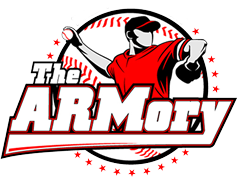Quintin Time!! Quintin Time!: Another Arm Pain Case Study
Quintin Pile has a new arm and a new walkout “song” for his next season with the Wofford College Terriers.
Picture this: The coach makes a visit to the mound and motions for right hander out of the bullpen. The anxious crowd cranes their necks to get a glimpse of the bullpen gate. Just before it opens, the public address system blares this: Quintin Time!! Quintin Time!
Last winter we worked with one of Quintin’s teammates, a Senior righty named Connell Anderson who was operating on the last thread of a UCL. As a Wofford College senior, he had no time for Tommy John surgery, and he surmised that pro baseball was not in his futute.
His goals were to help his team in any way he could, and to create some lifelong memories. After a round of ARP Wave therapy and re-patterning of several mechanical flaws, Connell was able to have a very successful year for the Terriers.
As the spring season wrapped up, I received a call from Wofford pitching coach, Jason Burke. He had another pitcher he wanted me to speak to named Quintin Pile.
Quintin is a redshirt shophomore righty from Tyler, TX. He was a “dude” out of high school and looked to have a promising future in college until a UCL injury sidetracked him 2 years ago. When doctors informed him of his injury, he was devastated. With the support of his father, Mike, Quintin courageously accepted the surgery and set forth on the path through rehab and back to the Wofford mound in Spartanburg, SC.
But things didn’t quite go as planned.
Sixteen weeks after his surgery, Quintin began his return to throwing program in earnest. Unlike many pitchers who breeze through with no pain, Quintin’s elbow never quit hurting. After a year, he still couldn’t make a single throw without excruciating medial elbow pain. Doctors found a bone spur in his medial elbow and removed it, but still, Quintin found no relief.
Inexplicably he still experienced severe debilitating pain on every throw.
Jason hoped my team and I could help this fine young man overcome his elbow pain so he could get back to his previous form.
When I conducted Quintin’s initial interview, I was encouraged to hear that Wofford College owned a few Durathro Training Socks and that he had been able to make sock throws without pain. That’s always a great sign.
We took Quintin through the same process we use for our “Precision Strike” 1 day One on One Evaluation and Training Sessions.
After gathering a complete medical history, we started with an initial physical evaluation. I checked Quintin for scapular dyskinesia, shoulder internal rotation deficit, thoracic mobility, hip mobility, ankle mobility, deep squat, active straight leg raise and trunk stability push-up.
Quintin scored cautions or significant opportunities for improvement on the following: scapular dyskinesia, shoulder internal rotation, thoracic rotation to both sides, bilateral quad tightness, bilateral ankle mobility restrictions, deep squat, and the active straight leg raise test.
Next we warmed Quintin up and shot a high speed video (240 fps) of his pitching movement pattern after which we retired to our media room to show him a brief keynote presentation describing the mechanical efficiencies we would be looking for during his video analysis.
As we proceeded through his video, I pointed out several inefficiencies I saw. The cautions and significant opportunities identified included poor glute activation, a lead leg disconnect, a pronated takeaway, a sight inverted W, early torso rotation, failure to pronate and internally rotate into launch, failure to continue rotating around his front hip which allowed his elbow to cross the midline of his body, creating a late bang on the posterior shoulder.
With his history of medial elbow pain, I expected to see a forearm flyout, but there was none present.
With the evaluation complete, I wrote out his throwing protocol “Glute activation protocol with an inverted W twist, side quick picks, jump backs, and extra work on deceleration drills, Marshalls and walking Marshalls”.
He was to perform each drill in the Durathro training sock five times with a connection ball before shifting to a regular baseball throw on one rep per drill. In our studies of the training sock, we have found that the improved deceleration pattern it creates eliminates eccentric biceps tension and activates the first responders in the forearm. This explains the fact that our students with even long standing pain in the shoulder or the elbow are able to perform training sock throws without pain.
After teaching him all the throwing drills in his training protocol, I sent Quintin next door to our Fitness Fusion gym where our ARMory Strong Director, Matt Abramson got him started on the corrective exercises for all the mobility constraints he displayed.
Before we started his formal throwing program our Director of Player Development and ARP Wave Specialist, Ty Sullivan performed the first of 10 ARP Wave sessions to give us a boost to Quintin’s rehab plan.
We have been using the ARP wave (accelerated recovery program) modality for a little over a year, and we have seen some incredible results.
I know there are critics of ARP Wave therapy. One internet has blasted the modality on twitter.
Admittedly, the marketing literature from ARP wave can be a little over the top, and I agree that some of its criticism might be warranted; however, for us it has been another valuable tool in our box.
If you’re not familiar with ARP wave, it’s a very intense electrical stimulation wave form that provides a hyper infusion of blood flow and re-educates pain inhibited neuromuscular pathways to normalize the timing and synergy of movement, thereby reducing or eliminating pain.
In our experience, ARP wave alone, doesn’t solve a pitcher’s pain, but when teamed with movement pattern corrections, elimination of physical constraints, conditioning and preparation of the body to accept the stresses of throwing, and a healthy nutrition, hydration, and sleep program, ARP wave modality provides us with the boost we often need to get a guy over the hump.
To appreciate the value of ARP Wave therapy, it’s important to understand the neurophysiology of tissue healing and pain modulation. The healing agents for tissue repair are found in the platelets of the blood. By creating a massive influx of blood flow to the injured area, we deliver those necessary platelets to the area. That expedites recovery and repair of injured tissue. Additionally, sometimes after an injury or a surgical procedure, the sympathetic nervous system activates a pain reflex loop that get stuck in overdrive and continues to report pain even long after the tissue has healed. This is known as Reflex Sympathetic Dystrophy (RSD) or Complex Regional Pain Syndrome (CRPS). By jolting the sympathetic nervous system with high intensity electrical stimulation, we are often able to reset the pain reflex and alleviate the pain.
I can tell you this about ARP wave. It certainly worked for Quintin, and it has helped dozens of other clients at The ARMory. So criticize it if you want, we’ll stick with what works.
After Quintin’s first ARP wave session, Ty took him through his first set of throws.
Initially, Quintin was surprised to be able to throw at moderate intensity without pain. But after about 15 throws, the pain returned. Reviewing his evaluation and noticing that the slight inverted W could be a contributor to pain, Ty had Q throw with a connection ball under his arm. This increased his pain, so even though Quintin presented no forearm flyout on his evaluation, Ty shifted the connection ball to position 1 between the biceps and forearm. The next throw didn’t hurt, so we changed Quintin’s throwing plan to Glute Activation with a forearm flyout twist (I don’t have time to explain our terminology, but basically, the twist tells us where to put the connection ball if one is needed).
In our process, pain is neither good nor bad, but is simply information. It is a beacon that guides us to physical or mechanical inefficiencies that might need to be addressed. Quintin’s pain told us how to proceed
For the next 5 days, Quintin received 2 ARP wave sessions per day.
He was encouraged to get 8-10 hours of sleep per night, to hyper-hydrate with lots of clear liquids and he was prescribed a protein rich diet that would provide the necessary building blocks for tissue repair and recovery.
During those 5 days Quintin attended 3 hours of training each day. He spent an hour working on his customized throwing plan using the Durathro Training Sock, weighted balls, and a connection ball, gradually weaning himself toward painfree unaided throwing.
During the second hour Quintin performed a Superhuman Volume 1 Motor Building workout designed to elicit the power from his lower half and torso necessary to attenuate the forces on his elbow. These workouts were the developed from the results of a 2 ½ year study we conducted to determine the specific types of exercises that translate most directly to power on the mound.
The third hour was for arm care, wrist weights, first responder training, new age arm care drills unique to The ARMory and The Texas Baseball Ranch, and Superhuman Volume 3 corrective exercises to erase the physical constraints we found during his assessment.
Monday, Tuesday, and Wednesday went well. After each ARP wave session Quintin was able increase the volume and intensity of his throws without pain. Then on Thursday (day 4) Quintin said he was ready to take his new pain free arm for a spin.
After a warmup period, we started the throwing session by cuing up for blasting through our sound system my favorite arm pain management song, James Brown “I Feel Good”.
Next, I instructed Quintin that every time he threw a ball without pain, he was required to celebrate openly with a verbal shout and a physical gesture of his choice. I told him I understood that this would seem a bit awkward, but that it was a vital part of the myelination of the appropriate neuromuscular pathways. This was a very important piece of the puzzle that could not be neglected or approached half-heartedly.
You see, the truth is, when a pitcher is overcoming arm pain, we really don’t know exactly what goes right in his pattern to elicit a pain free throw. We have some ideas about mechanical efficiency and the possible contributors to pain, but to say we would be absolutely certain as to the reason he threw without pain would be a false statement.
But Quintin’s infinitely intelligent body knows what elicits pain and what doesn’t.
By adding emotion immediately after the performance of a pain free throw, we are able accelerate the myelination of that neuromuscular pathway and make it more likely that he will do it again. I cautioned Quintin that if he did feel any pain, he must understand that it carried no catastrophic meaning. It just meant that something had gone slightly awry in the movement. If he completely ignored a painful throw and remained stoic and emotionless, he would deny the aberrant neuromuscular pathway the myelin necessary to increase its likelihood of repetition.
The instructions were made very clear: If he made a throw that didn’t hurt, he was to celebrate like he had won the lottery. If he threw one that hurt, he was to completely ignore it.
When the music began, Quintin started making his throws. After the first throw we all paused, including Quintin, to see if there was any pain. After what seemed like an eternity, but really was probably only about 3 seconds, Quintin let out a “Whoo! No Pain!” and he pumped his fist.
We all cheered!
Quintin continued the process, celebrating every painless attempt, making about 60 throws, and eventually ramping up to full intensity. I snuck a radar gun behind him and he noted that he was topping at 85 mph.
About 50 throws in, I changed the music to my “Arm Pain Assassin” song… the theme from “The Good, The Bad, and The Ugly.” I started my own celebration by walking around and pretending so shoot all the guys in the room with finger pistols, laughingly proclaiming, “The Arm Pain Assassin strikes again.”
Quintin completed his throwing routine for the day with no report of pain. I glanced at Quintin’s dad, Mike who had been there with him all week. Through misty eyes, Mike said, “We’ve been chasing this for over 2 years. Thank you.” When Quintin and his father hugged, they both began to cry, and I can tell you first hand, there was not a dry eye in the building.
It’s moments like this with kids like Quintin Pile that make this the best job in the world.
I understand that there will always be critics and naysayers.
Lord knows I’ve heard lots of stories about things that have been said about me by lots of people who have never set foot in our facility.
I’m good with that.
I consider it the price I pay to have the honor and privilege of working with special guys like Quintin Pile.
By the way, Quintin sent me a video of him working out in garage the other day.
Looks like his results are going to stick.
I spoke with Quintin last night. He said, “Thanks again for everything Randy… I can’t wait for the upcoming fall and spring. It feels great to throw with intent and not worry about pain.”
I can’t wait to watch Quintin Pile get back on the mound and get back to pursing his big league dreams.
Thank you Quintin for a great week.
I am honored to have been allowed to work with you.
If you’re having arm pain, or if you’re interested in improving velocity or command, check out our brand new Precision Strike 1 Day 1-on-1 Evaluation and Training program. Come visit us for anywhere from 3-6 hours and get all the services, training, and instruction you need to solve your pain and take your game to the next level.
Call us at 813-655-3342 and get scheduled right now!















Leave a Reply